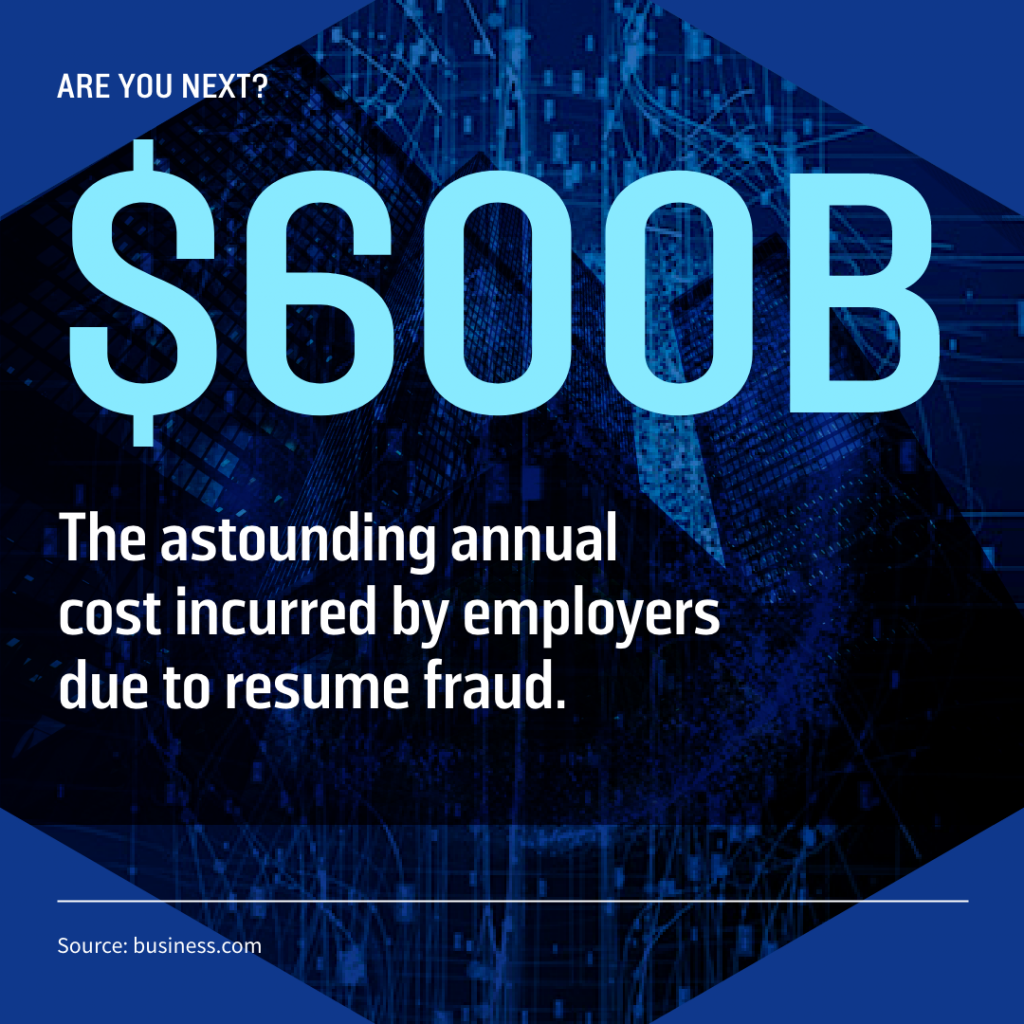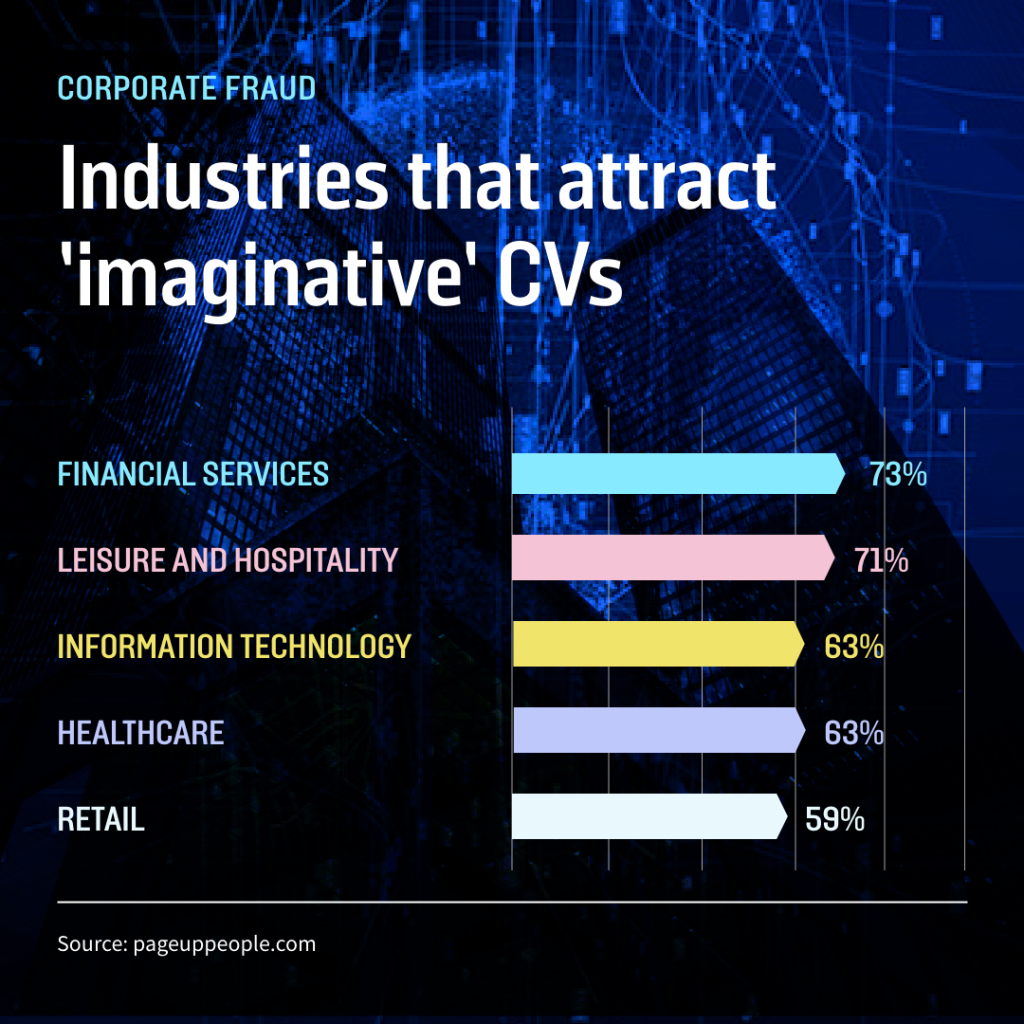Corporate fraud is growing into a multi-billion dollar problem. Half of all companies experience fraud, ranging from document fraud to phishing attacks. The problem is here, and expected to grow. Here’s what you need to know, and how to avoid it.
Corporate fraud is a ticking time bomb in today’s digital landscape, with the risk of document fraud ever more significant. Criminals are taking advantage of the increasing digitization of business operations to submit fraudulent documents, and traditional methods of record verification are no longer enough to stop them.
Corporate fraud – who’s next?
As cyber security expert and police commissioner Jan Olsson warns, “phishing attacks are increasing at a rapid pace. Of all data breaches that occur in the world, phishing is responsible for 80% of all of them.” This was the case for the French Aerospace company FACC, which lost $54 million to a sophisticated phishing scam. It’s clear that companies must take proactive measures to verify corporate decisions, such as securing documents and involving IT experts in cases of doubt. As Olsson emphasizes, “if you as an employee receive emails where you have just an ounce of doubt, it should go through an IT expert first.”
Law enforcement agencies worldwide are working tirelessly to combat document fraud, but the threat is growing. Shockingly, educational institutions worldwide saw 1.4 million cases of document fraud in 2021 alone, and experts suggest it’s about to get worse. Offenders use fake documents to gain access to prestigious international universities, cheating deserving students of their rightful opportunities. And it’s not just universities — a recent survey by PwC found that 51% of organizations worldwide reported experiencing fraud within the past two years, marking the highest level in the past two decades.
The threat of document fraud looms large over businesses, and the consequences of falling prey to these crimes can be catastrophic. If time is money, the doubled-down cost of clearing your name and reputation in your industry sector — with the added cost of fines and legal fees to cover for the mishap.
What you should be worried about
Document fraud has been a major concern since the beginning of time but with the rise of high-tech scams, the problem has snowballed out of control. Brace yourselves, for the most common types of document fraud — CV, certificates, and invoicing — are wreaking havoc in the industry.
The truth is that job seekers today are resorting to extreme measures to deceive employers. They are intentionally overstating their qualifications and creating fake documents, such as CVs and certificates. Shockingly, a whopping 93% of individuals know someone who cheated on their resume, and only 31% of those liars were detected. Even worse, just 21% of those caught were punished, which means that repeat offenders are rampant. This kind of resume fraud costs employers an astounding $600 billion annually.
But the problem doesn’t end there. Industries such as hospitality and retail are no strangers to imaginative claims, but finance and healthcare take the cake. In fact, a staggering 73% and 63% of applicants in these respective industries padded their resumes. And certificate fraud is also on the rise, which puts both workers and the public at risk, especially in healthcare and construction industries. It’s now easier than ever to get a fake certificate for a low cost, and many organizations fail to verify the authenticity of someone’s degree or training.
Scammers are also resorting to invoice fraud. They create bogus invoices that closely mimic those from legitimate suppliers, but with different bank account details. Swindlers are using increasingly sophisticated tactics to create fake documents and trick companies into wiring money to their accounts. If you’re not careful, you could be tricked into sending thousands of dollars to a fraudster’s account, just like what happened to two tech giants we all know.
In 2013–2015, a Lithuanian man defrauded Facebook and Google of over $100 million using fake emails, invoices, and corporate stamps. He tricked the companies into wiring money to his own accounts in multiple countries. It took the companies years to discover the fraud and recover some of the funds. This case illustrates how easy it is for scammers to use fake documents to commit invoice fraud, and how difficult it can be for companies to detect and recover from such scams. It should serve as a wake-up call to businesses everywhere.
Jan Olsson states that “identification will be crucial, through documents or certificates, something has to happen” in order to prevent invoice fraud.
AI and New Tech Further Enable Corporate Fraud
The rise of new technologies and AI advancement have allowed criminals new ways of staying steps ahead of victims. Cybercriminals are becoming much more sophisticated and exploit vulnerabilities, errors, and trust to commit many new crimes. One alarming form of corporate fraud enabled by AI, is deep fake technology. Synthetic audios, videos, images, and virtual personas created using AI may have started out as entertainment in the minds of the public, but are now being used by cybercriminals to carry out phishing attacks, identity theft, financial fraud, and manipulation.
Deep fakes can create realistic-looking videos of senior executives asking for sensitive information or requesting large transfers of funds, causing significant financial damage to companies. As Jan Olsson warns, “It is completely impossible for anyone to determine whether a call is AI-generated or not. Right now, the tools are quite slow and have a cost. But think about it in three years. It is an eternity in this respect. They will be completely free and they will be better and faster.”
This advancement in technology poses a significant threat to businesses, as demonstrated by a recent incident involving a massive bank fraud that used deep fake voice technology to steal millions of dollars from a financial institution. In this case, the criminals created a realistic-sounding voice of a company executive to deceive employees into transferring large amounts of money to their accounts.
Watermark removal tools are another technology that is enabling corporate fraud. AI-powered tools can remove watermarks from images and documents, making it easy for scammers to use them for fraudulent purposes. This means that even your own company’s branded materials can easily be used against you in fraudulent schemes.
Furthermore, advancements in natural language-processing and machine learning are making it easier for scammers to create convincing phishing emails and texts. These scams are designed to trick you into handing over sensitive information such as passwords, account details, and banking information.
What Can Companies Do To Protect Themselves?
Corporate fraud is a menace that can strike at any time, wreaking havoc on business and the bottom line. It takes a multi-layered approach to prevent this surge, and you must be willing to take the necessary steps to protect your company from even the many fraudsters out there. This means investing in authentication services, employee training, and maintaining ongoing vigilance.
Authentication services can be a crucial tool in your arsenal to protect your business. They offer an extra layer of protection that can help to prevent cybercriminals from accessing your sensitive data and financial resources. With these services in place, you can rest assured that your business is safe from the latest fraud techniques, including deep fakes, invoice fraud, and document fraud.
But simply relying on authentication services is not enough. Employee training is also important to ensure that your staff is equipped to detect fraudulent activity. They need to know what to look for and how to act quickly in the event of suspicious activity. This training should cover topics such as identifying phishing emails as well as how to respond and reporting suspicious behavior using best practices for data security.
Finally, ongoing vigilance is essential to keeping your business safe. You must always be on the lookout for new and emerging fraud tactics, as cybercriminals are evolving their techniques. This means regularly reviewing your security protocols, staying up-to-date with the latest security trends and technologies, and being proactive in addressing any potential security risks.
In conclusion, protecting your business is a serious matter that demands full attention. You cannot afford to take chances when it comes to the safety and security of your company. By implementing authentication services, providing employee training, and maintaining fraud top-of-mind, you can at the very least make other businesses much easier targets than your own.







